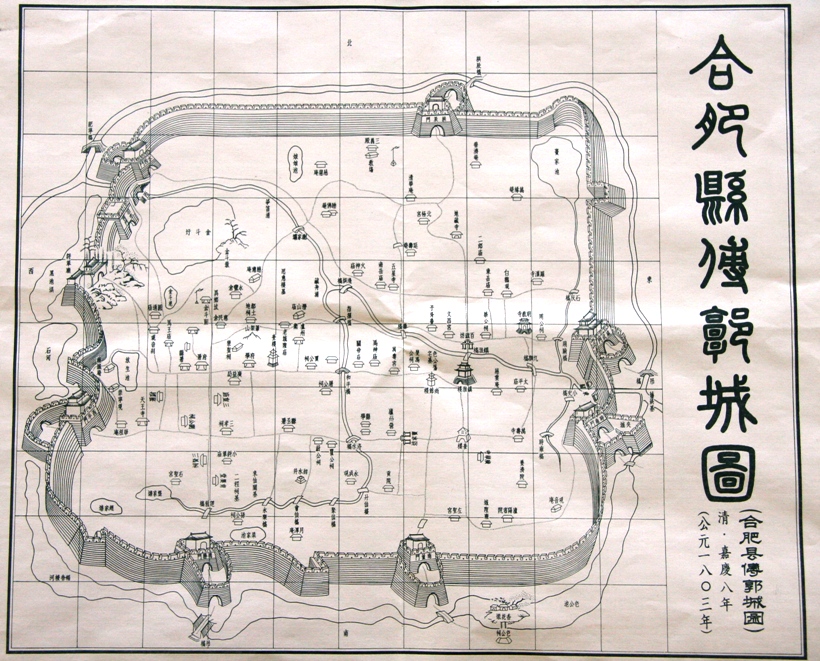|
Shanghai Y-10
The Shanghai Y-10 or Yun-10 () is a four engined narrow-body jet airliner developed in the 1970s by the Shanghai Aircraft Research Institute. The plane used Boeing's 707-320C as reference, designed according to Federal Aviation Regulation (Part 25, 1970 edition). Due to unavailability of the intended WS-8 turbofan engines the prototype aircraft used Pratt & Whitney JT3D-7 turbofan engines, acquired as spare engines for CAAC's small fleet of Boeing 707 aircraft. The cabin could be configured to seat 178 in high-density, 149 in economy, or 124 in mixed-class and the large flight deck accommodated five crew members: pilot, co-pilot, flight engineer, navigator, and radio operator. History Development work, given code name 708, began in Shanghai in August, 1970 for Civil Aviation Administration of China (CAAC). The plane was intended to serve as a demonstrator and help the Chinese industry obtain experience in large aircraft design and flight testing. The Y-10 development ... [...More Info...] [...Related Items...] OR: [Wikipedia] [Google] [Baidu] |
WikiProject Aircraft
A WikiProject, or Wikiproject, is a Wikimedia movement affinity group for contributors with shared goals. WikiProjects are prevalent within the largest wiki, Wikipedia, and exist to varying degrees within sister projects such as Wiktionary, Wikiquote, Wikidata, and Wikisource. They also exist in different languages, and translation of articles is a form of their collaboration. During the COVID-19 pandemic, CBS News noted the role of Wikipedia's WikiProject Medicine in maintaining the accuracy of articles related to the disease. Another WikiProject that has drawn attention is WikiProject Women Scientists, which was profiled by '' Smithsonian'' for its efforts to improve coverage of women scientists which the profile noted had "helped increase the number of female scientists on Wikipedia from around 1,600 to over 5,000". On Wikipedia Some Wikipedia WikiProjects are substantial enough to engage in cooperative activities with outside organizations relevant to the field at issue. For e ... [...More Info...] [...Related Items...] OR: [Wikipedia] [Google] [Baidu] |
Radioman
Radioman (RM) was a rating for United States Navy and United States Coast Guard enlisted personnel, specializing in communications technology. History of the rating The rating was created originally in 1921. In 1997, under the direction of Chief of Naval Operations Admiral Mike Boorda, the rating merged with the Data Processing Technician (DP) rating to form the Information Systems Technician (IT) rating. Both Radiomen and Data Processing Technicians in the Navy had to undergo general rate training and take a computer-based exam in order to be designated under the new IT rating. In 1996, the Submarine force merged Radioman with Electronics Technicians/ Electronic Warfare Specialist. The Coast Guard rating was renamed Telecommunications Specialist (TC) in 1995, which split in July 2003 to make up the Information System Technician (IT) and Operations Specialist (OS) ratings. Scope of work The Radiomen of the US Navy were responsible for transmitting and receiving radio signals ... [...More Info...] [...Related Items...] OR: [Wikipedia] [Google] [Baidu] |
Kunming
Kunming (; ), also known as Yunnan-Fu, is the capital and largest city of Yunnan province, China. It is the political, economic, communications and cultural centre of the province as well as the seat of the provincial government. The headquarters of many of Yunnan's large businesses are in Kunming. It was important during World War II as a Chinese military center, American air base, and transport terminus for the Burma Road. In the middle of the Yunnan–Guizhou Plateau, Kunming is at an altitude of above sea level and a latitude just north of the Tropic of Cancer. As of 2020 census, Kunming had a total population of 8,460,088 inhabitants, of whom 5,604,310 lived in its built-up (or metro) area made of all urban districts but Jinning, not conurbated yet. It is at the northern edge of Dian Lake, surrounded by temples and lake-and-limestone hill landscapes. Kunming consists of an old, previously walled city, a modern commercial district, residential zones and university areas. ... [...More Info...] [...Related Items...] OR: [Wikipedia] [Google] [Baidu] |
Guangzhou
Guangzhou (, ; ; or ; ), also known as Canton () and alternatively romanized as Kwongchow or Kwangchow, is the capital and largest city of Guangdong province in southern China. Located on the Pearl River about north-northwest of Hong Kong and north of Macau, Guangzhou has a history of over 2,200 years and was a major terminus of the maritime Silk Road; it continues to serve as a major port and transportation hub as well as being one of China's three largest cities. For a long time, the only Chinese port accessible to most foreign traders, Guangzhou was captured by the British during the First Opium War. No longer enjoying a monopoly after the war, it lost trade to other ports such as Hong Kong and Shanghai, but continued to serve as a major transshipment port. Due to a high urban population and large volumes of port traffic, Guangzhou is classified as a Large-Port Megacity, the largest type of port-city in the world. Due to worldwide travel restrictions at the beginni ... [...More Info...] [...Related Items...] OR: [Wikipedia] [Google] [Baidu] |
Hefei
Hefei (; ) is the capital and largest city of Anhui Province, People's Republic of China. A prefecture-level city, it is the political, economic, and cultural center of Anhui. Its population was 9,369,881 as of the 2020 census and its built-up (or ''metro'') area made up of four urban districts plus Feidong, Feixi and Changfeng counties being urbanized, was home to 7,754,481 inhabitants. Located in the central portion of the province, it borders Huainan to the north, Chuzhou to the northeast, Wuhu to the southeast, Tongling to the south, Anqing to the southwest and Lu'an to the west. A natural hub of communications, Hefei is situated to the north of Chao Lake and stands on a low saddle crossing the northeastern extension of the Dabie Mountains, which forms the divide between the Huai and Yangtze rivers. The present-day city dates from the Song dynasty. Before World War II, Hefei remained essentially an administrative centre and the regional market for the fertile plain to the ... [...More Info...] [...Related Items...] OR: [Wikipedia] [Google] [Baidu] |
Zhengzhou
Zhengzhou (; ), also spelt Zheng Zhou and alternatively romanized as Chengchow, is the capital and largest city of Henan Province in the central part of the People's Republic of China. Located in north-central Henan, it is one of the National Central Cities in China, the centre of Central Plains area, and serves as the political, economic, technological, and educational center of the province. The Zhengzhou metropolitan area (including Zhengzhou and Kaifeng) is the core area of the Central Plains Economic Zone. The city lies on the southern bank of the Yellow River. Zhengzhou is a major hub of China's national transportation network, with railways connecting Zhengzhou to Europe and an international airport. Zhengzhou is a and a State-list Famous Historical and Culture City. As of 2020, there are two World Cultural Heritage Sites in Zhengzhou. The Zhengzhou Commodity Exchange (ZCE) is China's first futures exchange. Zhengzhou Airport Economy Zone is China's first Airport E ... [...More Info...] [...Related Items...] OR: [Wikipedia] [Google] [Baidu] |
Harbin
Harbin (; mnc, , v=Halbin; ) is a sub-provincial city and the provincial capital and the largest city of Heilongjiang province, People's Republic of China, as well as the second largest city by urban population after Shenyang and largest city by metropolitan population (urban and rural together) in Northeast China. Harbin has direct jurisdiction over nine metropolitan districts, two county-level cities and seven counties, and is the eighth most populous Chinese city according to the 2020 census. The built-up area of Harbin (which consists of all districts except Shuangcheng and Acheng) had 5,841,929 inhabitants, while the total metropolitan population was up to 10,009,854, making it one of the 50 largest urban areas in the world. Harbin, whose name was originally a Manchu word meaning "a place for drying fishing nets", grew from a small rural settlement on the Songhua River to become one of the largest cities in Northeast China. Founded in 1898 with the coming of the C ... [...More Info...] [...Related Items...] OR: [Wikipedia] [Google] [Baidu] |
Beijing
} Beijing ( ; ; ), alternatively romanized as Peking ( ), is the capital of the People's Republic of China. It is the center of power and development of the country. Beijing is the world's most populous national capital city, with over 21 million residents. It has an administrative area of , the third in the country after Guangzhou and Shanghai. It is located in Northern China, and is governed as a municipality under the direct administration of the State Council with 16 urban, suburban, and rural districts.Figures based on 2006 statistics published in 2007 National Statistical Yearbook of China and available online at archive. Retrieved 21 April 2009. Beijing is mostly surrounded by Hebei Province with the exception of neighboring Tianjin to the southeast; together, the three divisions form the Jingjinji megalopolis and the national capital region of China. Beijing is a global city and one of the world's leading centres for culture, diplomacy, politics, finance, busi ... [...More Info...] [...Related Items...] OR: [Wikipedia] [Google] [Baidu] |
Shanghai Aircraft Manufacturing Company
Shanghai Aircraft Manufacturing Company (), formerly Shanghai Aircraft Manufacturing Factory. It was founded in 1950 with a registered capital of 4 billion yuan, with two bases, Pudong and Dachang, with more than 5,000 employees. It is a Shanghai-based aerospace company with business in: * aircraft manufacturing * parts and components subcontractor * repair and overhaul * non-aerospace products: aerial ladders, hovercraft, glass wall manufacturing, Swerve rack for magnetic aerotrain It now belongs to the Commercial Aircraft Corporation of China (COMAC) that was established in 2008. Aims It aims to continuously enhance: * the assembly and integration * core key component manufacturing * supply chain construction and management * new technology, new method, new material application and development * manufacturing process control * civil aircraft delivery And aims to shoulder the important mission of the development of China's large aircraft. Products Regional Jets * Comac ARJ21 - f ... [...More Info...] [...Related Items...] OR: [Wikipedia] [Google] [Baidu] |
Eleventh Five-Year Plan (People's Republic Of China)
The Five-Year Plans () are a series of social and economic development initiatives issued by the Chinese Communist Party (CCP) since 1953 in the People's Republic of China. Since 1949, the CCP has shaped the Chinese economy through the plenums of its Central Committee and national congresses. The party plays a leading role in establishing the foundations and principles of Chinese communism, mapping strategies for economic development, setting growth targets, and launching reforms. Planning is a key characteristic of the nominally socialist economies, and one plan established for the entire country normally contains detailed economic development guidelines for all its regions. In order to more accurately reflect China's transition from a Soviet-style command economy to a socialist market economy (socialism with Chinese characteristics), the plans since the 11th Five-Year Plan for 2006 to 2010 have been referred to in Chinese as "guidelines" () instead of as "plans" (). China's F ... [...More Info...] [...Related Items...] OR: [Wikipedia] [Google] [Baidu] |
Mao Zedong
Mao Zedong pronounced ; also romanised traditionally as Mao Tse-tung. (26 December 1893 – 9 September 1976), also known as Chairman Mao, was a Chinese communist revolutionary who was the founder of the People's Republic of China (PRC), which he led as the chairman of the Chinese Communist Party from the establishment of the PRC in 1949 until his death in 1976. Ideologically a Marxist–Leninist, his theories, military strategies, and political policies are collectively known as Maoism. Mao was the son of a prosperous peasant in Shaoshan, Hunan. He supported Chinese nationalism and had an anti-imperialist outlook early in his life, and was particularly influenced by the events of the Xinhai Revolution of 1911 and May Fourth Movement of 1919. He later adopted Marxism–Leninism while working at Peking University as a librarian and became a founding member of the Chinese Communist Party (CCP), leading the Autumn Harvest Uprising in 1927. During the Chinese Civil War ... [...More Info...] [...Related Items...] OR: [Wikipedia] [Google] [Baidu] |








